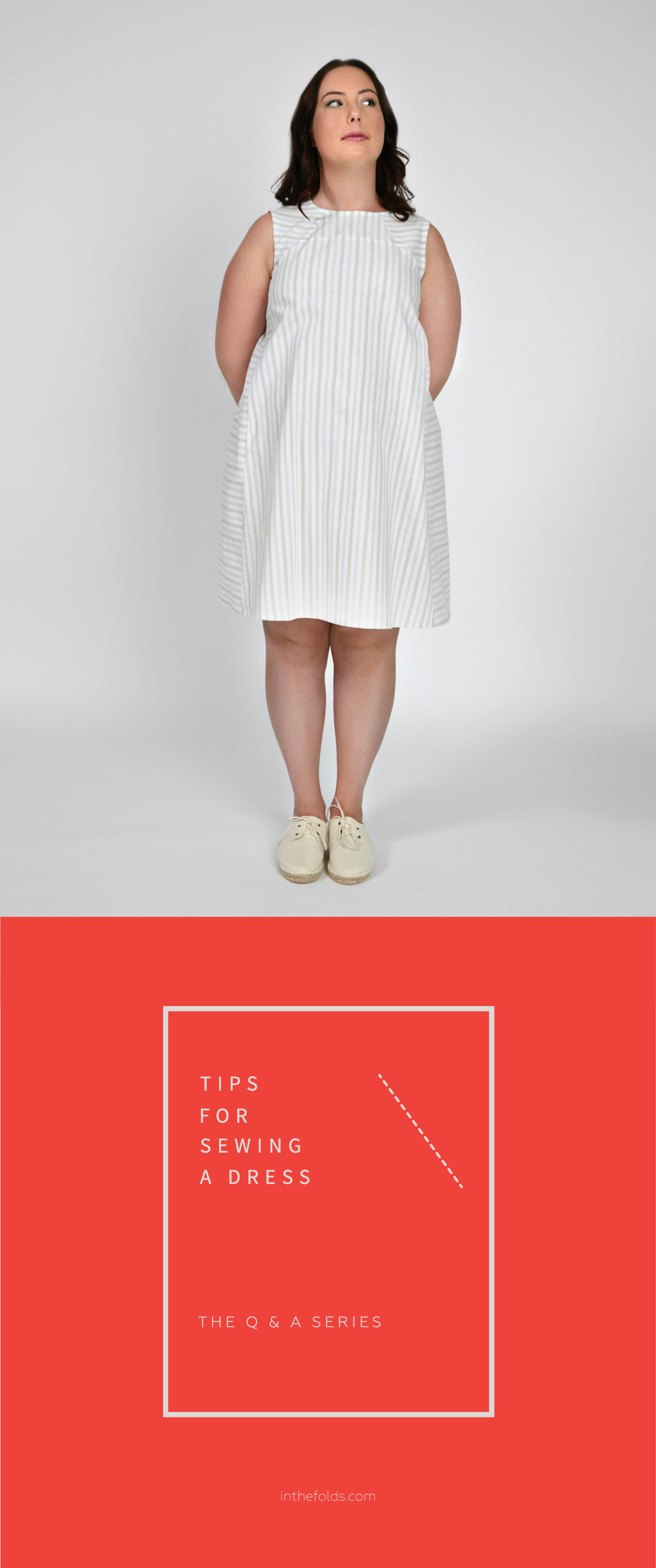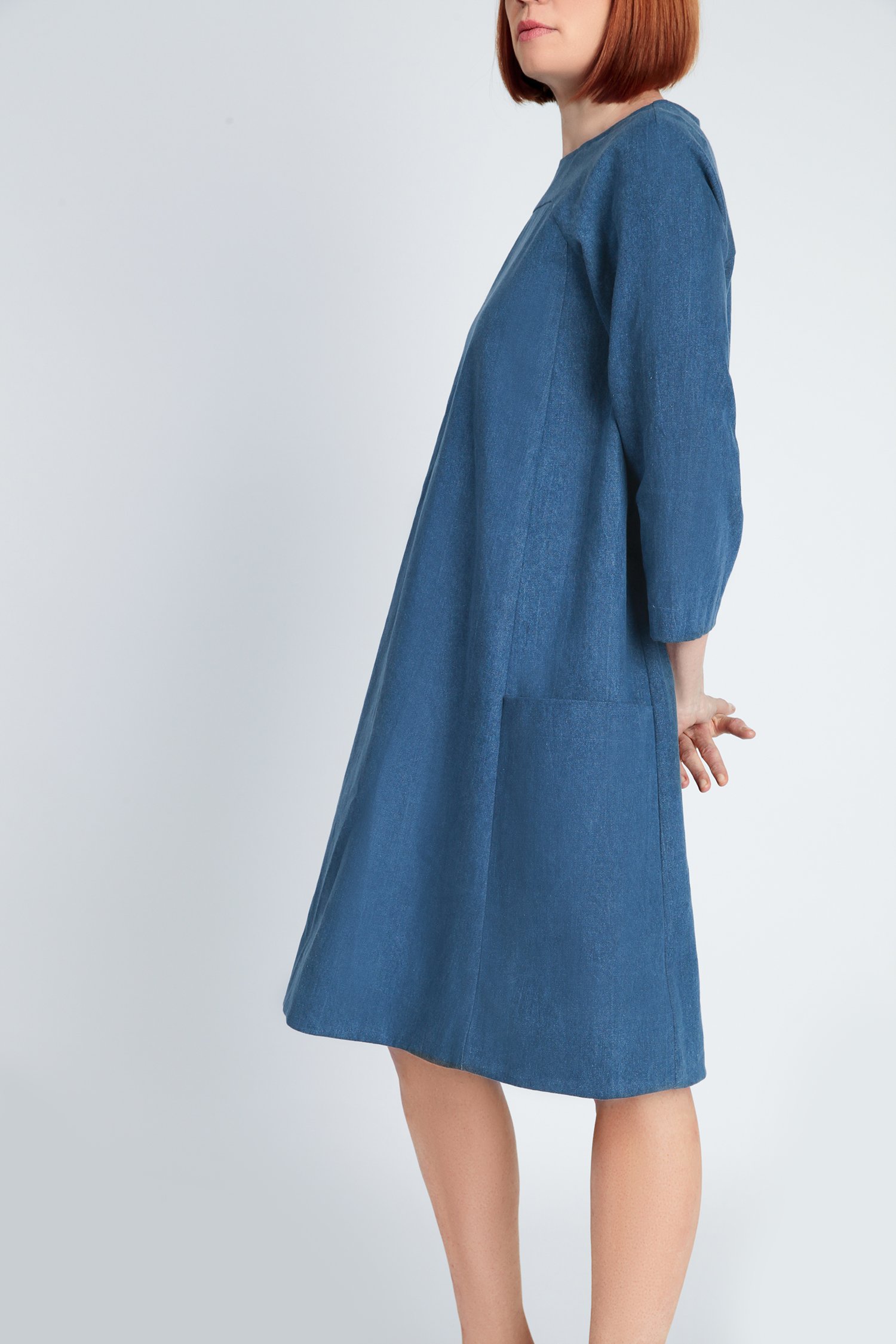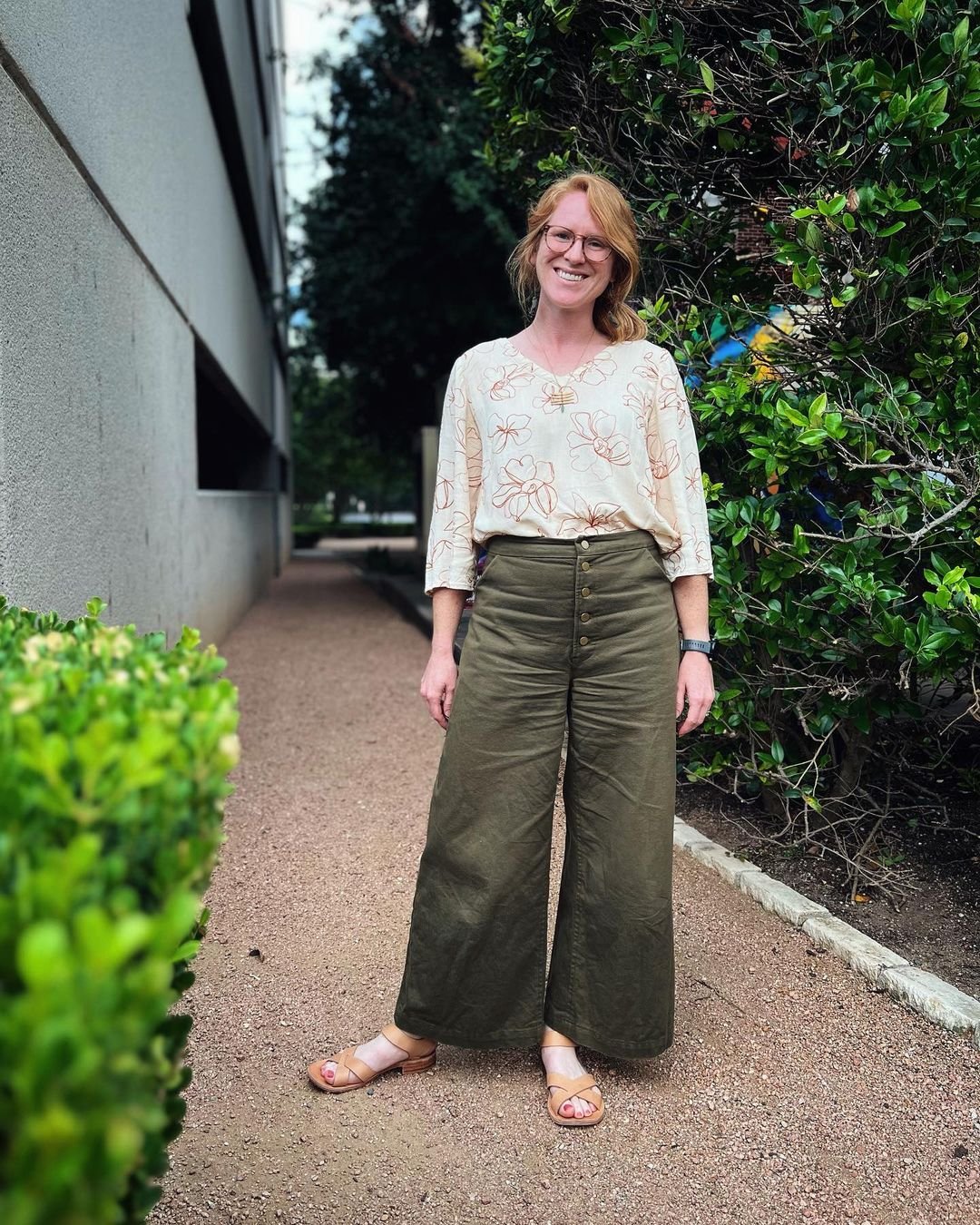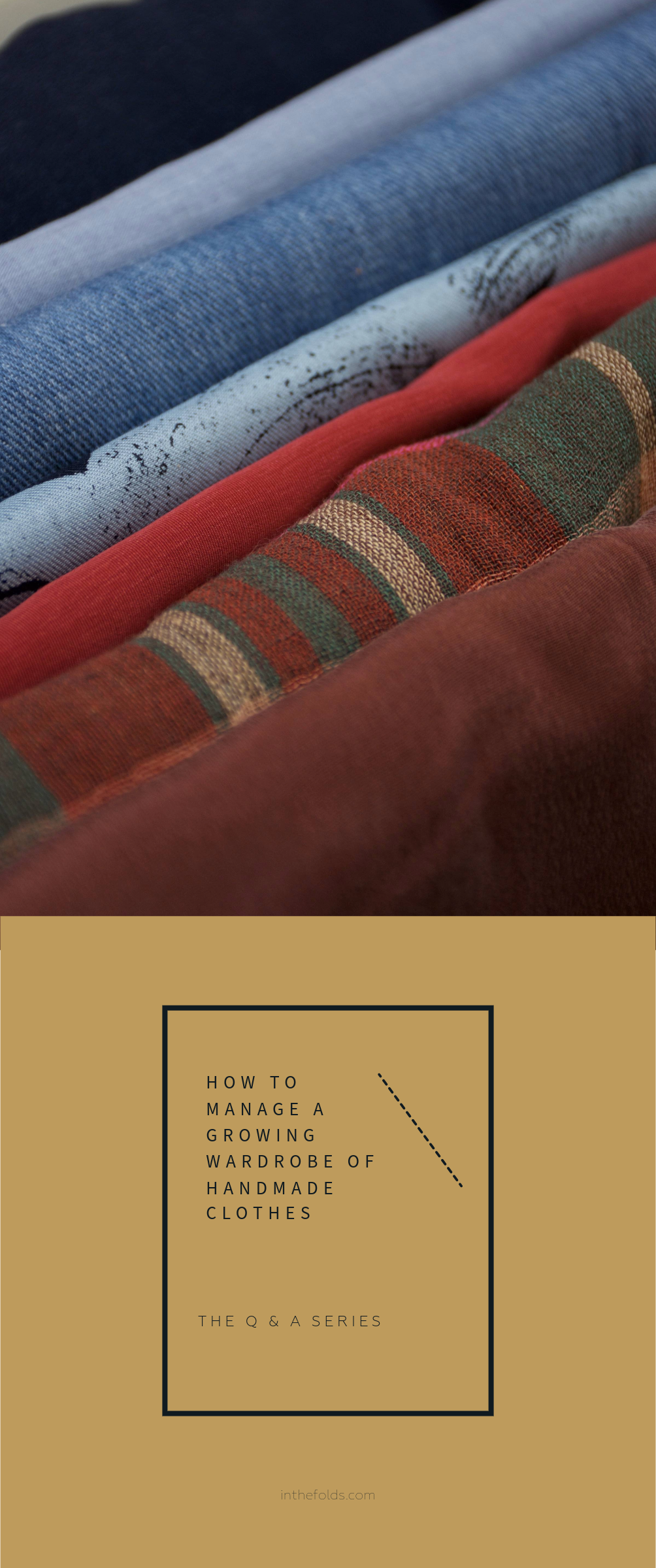THE Q & A SERIES
TIPS FOR SEWING A DRESS
Hi Emily,
I’m making the Rushcutter dress. Have you any tips? It’s my first dress.
Sonya
Hi Sonya,
Great to hear you’re giving the Rushcutter dress pattern a go! This was the very first pattern we released and has become an all-time favourite since then.
We’ve got dresses on our minds this month as we just released the Cartwright dress and top pattern in our Curated by ITF membership, and we think they’re a super fun project to make.
Dresses make great additions to a wardrobe because they’re a complete outfit - no need to think about what other garments go with them! Which definitely makes getting dressed in the morning much easier. I think a dress is also a great opportunity to be a bit daring with your fabric choice through fun prints and bright and bold colours.
My top tips for what to do before making a dress (or any project really!), would be:
READ THROUGH THE INSTRUCTIONS BEFORE YOU START
This will help you prepare and familiarise yourself with the techniques used in the pattern, so that once you get started you have a rough idea of the construction process of the dress will play out.
The Rushcutter is a good example of the importance of doing this, because it has a particularly fun way of coming together, so even just seeing the illustrations will be helpful.
Any journey is a little easier when you know where you’re heading, so don’t skip this step!
CHECK OUT THE RELATED HASHTAG ON INSTAGRAM
It’s really helpful to see a design on a range of different bodies, and also to see what fabrics work well for the pattern. Selecting the right fabric for the project is one of the challenges when making your own clothing, so seeing how the pattern looks made up in a particular fabric is always helpful. You can scroll through the Rushcutter dress hashtag on Instagram here.
Also, have a read through this post where we talk about choosing fabric for the Rushcutter dress pattern.
TAKE YOUR MEASUREMENTS FIRST
You should do this before starting any new project so that you can select the correct size/s. We have a blog post that will help you with that process here.
If you’re looking to take a deep dive into garment fitting, our Curated by ITF membership has a very supportive community with lots of additional resources to help you do this. This month we’re working on the Cartwright dress + top pattern.
In our Curated by ITF membership our new release patterns are accompanied by a supporting Fit Kit resource that covers how to measure yourself, choose a size and the order of operation for alterations for the pattern it relates to. The Fit Kit also covers a range of alterations with step-by-step instructions and illustrations, as well as patternmaking tutorials that show you handy techniques like adding seam allowance and what you need to do to check your patterns after making alterations.
When we release our designs as standalone patterns (usually 6-12 months after releasing them in our Curated by ITF membership), we make the Fit Kits available for purchase for an additional cost. You can see this with our Sawtell dress pattern which was recently released as a standalone pattern in our extended size range.
MAKE THE MOST OF PATTERN LAYERS
If using the PDF version of the pattern, we suggest taking advantage of the layers in the pattern so that you only print the size/s that you need. If using the paper pattern version, we suggest tracing a copy of the size/s you need so that you can come back to the pattern in the future (this isn't as important with the PDF version as you can always re-print it).
MAKE A TOILE
Also known as a muslin, a toile is basically a draft version of a pattern. The name comes from the fabric often used to make them - muslin (the American name) or toile (the French name). You can read more about it here.
At In the Folds, we believe making a toile is a really important part of sewing a garment and it’s another step that we don’t recommend skipping. By making a toile you can check the fit and have a practice run of new techniques. It means when you sew the real thing, you can enjoy the process and relax into some mindful slow sewing, instead of worrying about making mistakes and wasting money and fabric.
FOCUS ON WHAT YOU’D LIKE TO LEARN
Making clothes is such a fun hobby and there is so much room for growth and experimentation. It can, however, be frustrating when things don't go to plan, so we suggest focusing on the skills you would like to learn from the project, rather than just the end result of a finished dress. This way you will enjoy the process and have some great new skills under your belt when you're done!
The skills you’ll learn when making the Rushcutter dress include sewing: curved seams, pockets (inset or in-seam, depending on the view you choose), buttons or an invisible zip, and bias binding.
CHECK OUT THE RUSHCUTTER SEWALONG
Our pattern instruction booklets are an exhaustive reference for constructing our patterns, but to help you even more we also have a sewalong for the Rushcutter which includes photos of the construction process rather than illustrations.
We hope you enjoy using the Rushcutter dress pattern and making your first dress!
Happy sewing,
Emily
RESOURCES MENTIONED IN THIS ISSUE
The Rushcutter dress pattern can be found here.
The Sawtell dress pattern can be found here.
Check out our Rushcutter dress sewalong here.
More information about our monthly sewing subscription, Curated by ITF, can be found here.
Choosing fabric for the Rushcutter dress - read the post here.
How to print and assemble your PDF sewing pattern - read the post here.
How to (and why) make a toile - read the post here.
For more issues of the Q & A series, you can check out the archive here.
WHAT YOU’VE BEEN MAKING
Acton dress made by @asideofstitching












